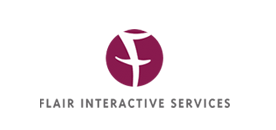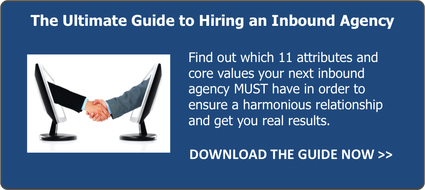 Looking for ways to ramp up your web site traffic quickly and easily? I often hear from folks who think that they need to do full-scale web site redesign to get more traffic—but more often than not, that's just not the case!
Looking for ways to ramp up your web site traffic quickly and easily? I often hear from folks who think that they need to do full-scale web site redesign to get more traffic—but more often than not, that's just not the case!
There are a lot of ways that you can significantly increase your monthly visits without spending thousands of dollars on a redesign. Check out my top five suggestions for driving more visits below.
1. Blog frequently
This is the #1 step that I recommend to almost all of my clients who want to increase traffic. Blogging is hands-down the best way to attract new visitors to your site. It's quick, it's easy and it attracts better than any other inbound marketing tactic.
Don't worry too much about how your blog looks in the beginning. (It doesn't really matter, as long as it's professional and doesn't look like a 10-year-old built it.) Granted, you will need to make sure that you have basic design best practices covered, but most blog templates are designed with those in mind anyway--and they're easy enough to change later if not.
Your focus initially should be getting frequent, valuable blog posts out there on a regular basis. Let me repeat that...your focus initially should be getting frequent, valuable blog posts out there on a regular basis.
According to Hubspot's State of Inbound Marketing report, businesses that blog get 55% more traffic that businesses that don't. Also, blogging frequency matters...69% of businesses that post 2-3 times per week acquire customers from their blog—while only 13% of companies that blog once per month do. The numbers don't lie, so catch up with your fellow marketers and put blogging very high on your priority list. Right away.
2. Embrace social media
Social media can seem scary to marketers who've never used it in their marketing arsenal.
A few of you might even be thinking that social media is not relevant to your business. You might think that it's "just for kids" or that your target market doesn't use social media. That may have been true ten years ago, but not anymore. According to the Pew Research Internet Project, a whopping 74% of adults use social media. Still think it's a fad?
Social media can be one of the lowest-cost, highest-return marketing tactics out there. You can see significant results by dedicating 2-3 hours per week to social media.
However, don't just set up a social media account and starting spamming everyone out there with "salesy" posts and messages. The key to getting great results with social media is to keep it...well...social. Just as you wouldn't dream of walking into a room and starting to sell your products or services to random strangers without first striking up a conversation, you really need to pay your dues with social media and participate. Start liking, following, sharing and retweeting content that you find valuable. As you get your feet wet, start small by sharing helpful "how to" or "tips" content from your blog to show that you know your stuff. In time, you can transition to creating other premium content offers—more on that below.
3. Use long-tail keywords
Google may have decreased the importance of keyword tags in their search algorithm, but that doesn't mean that keywords aren't important anymore. To the contrary, keywords are a critical part of your marketing strategy, your site structure, your on-page content, your code and your content offers. Run any SEO audit out there, such as our free audit tool, and you'll notice that keywords play a huge part in whether search engines (and users!) find your site attractive and useful.
Every page on your web site should have one primary keyword associated with it. Ideally, this should be a long-tail keyword (such as "pink gym shoes for toddlers") instead of a broad keyword (such as "shoes" or "gym shoes"). Your primary keyword should be included in your page's title tag, page heading, URL and a few times in the body copy. Not only can this ultimately improve your search rankings, it helps to keep you focused on the main purpose of every page, ensuring that every page is necessary and is providing meaningful value to your end user.
4. Optimize your web site pages
Once you have defined your primary keywords, you need to step back and take a cold, hard look at your current web site. Have you ever heard the expression "putting lipstick on a pig"? Don't rush into a site redesign and only focus on the look and feel of your web site. The "bones" of your site and the content that you're offering are far more important to your users than whether your site is the prettiest one out there. You can probably fix some of your site's critical issues and attract more traffic before undergoing a big redesign effort. Again, not undermining the importance of a clean, professional design...just don't obsess over design too much since search engines can't "see" the things that you're probably obsessing about.
Identify the top pages of your site and evaluate whether they are meeting SEO best practices, utilizing long-tail keywords, leveraging calls to action and offering valuable content (including premium content offers such as downloadable guides). Also, remember to remove duplicate pages, since they can really harm you from an SEO perspective.
5. Create valuable, engaging content offers
As I mentioned above, you want to share meaningful content with your users on all of your web properties and channels. In the beginning, focus on quick and easy offers that don't take a lot of time for you to create but that still provide high value to your visitors—think tip sheets, checklists and one-page downloads. Also, start thinking about how you can offer premium pieces of content, such as ebooks, white papers or webinars, and share them with your visitors based upon where they are in their buyer's journey. Show them what you know by sharing your knowledge and advice in non-pushy way. Address their biggest challenges and demonstrate solutions to those problems in high-value giveaways—but don't forget to ask visitors for their email address using a well-positioned opt-in form. Trust me, they won't mind handing over their email address if your content is enticing and helps them solve their problems or learn important information.
Seem overwhelming? It doesn't have to be! Remember that you can start small and don't have to do all of this at once...the most important thing is to just BEGIN. And then keep at it (consistently!) until you succeed. Once you reach your goals and have a solid number of visitors each month, you can then turn your attention to converting those visitors into leads.
Contact us if you need help with your marketing strategy, blog, social media, web site, SEO or premium content offers. Remember, it doesn't have to be difficult or time-consuming to attract more visitors to your site.
Ready to see real results and more visitors at your site? Take this list, print it out, pick one thing and then DO IT! Then let me know how it goes. Ready...set...GO!
Lisa Kirschner
Founder and Managing Director
Flair Interactive Services


